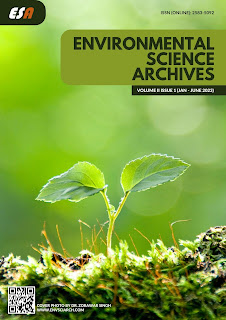Why Microplastics are of Concern ?

Why Microplastics are of Concern ? Dr. Zorawar Singh Plastics' extensive usage and abuse have resulted in major environmental degradation concerns that must be addressed immediately. One of the most frequent forms of marine trash found in our seas and lakes is plastic. Plastic trash may be of any size or shape. Microplastics are plastic particles that are fewer than five millimetres in length. These minute fragments might take decades or more to disintegrate completely. As a result, it is critical to monitor plastic consumption and disposal. Microplastics are microscopic plastic particles that are produced as a result of commercial product development as well as the breakdown of bigger plastics. Microplastics, as a contaminant, can be hazardous to both human and animal health. These can be primary or secondary microplastics. Primary microplastics are defined as any plastic pieces or particles that are 5.0 mm or smaller before entering the environment. These include clothing...



